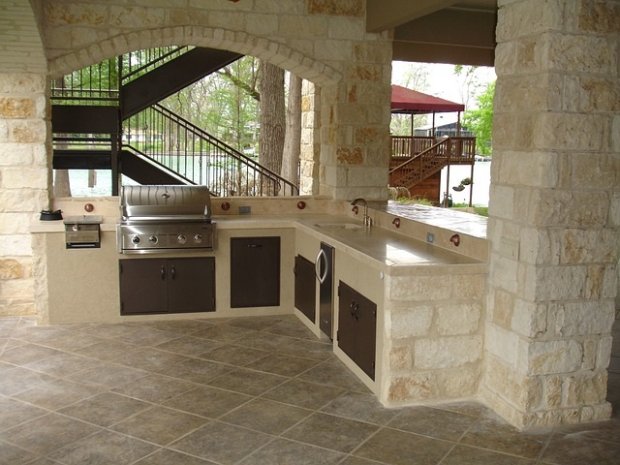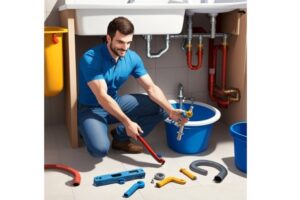No outdoor kitchen, or even backyard patio, can be considered complete without a grill. Avid outdoor chefs know that it can’t be just any grill, either. It must fit the space, functional requirements, and aesthetics of the outdoor kitchen without breaking homeowners’ budgets or requiring constant repairs.
There is no one model of grill that will be a good fit for every outdoor kitchen. Homeowners will have to consider their own needs and make their decisions from there. Read on to find out what DIY outdoor kitchen designers need to know to choose the perfect grills for their unique situations.

Table of Contents
Built-In vs. Portable Grills
Before moving on to fuel types, size concerns, and other matters, let’s get one thing out of the way. Some homeowners assume that they can just pick up portable grills at their local big-box stores and use them in the same way they would permanent fixtures. Unfortunately, that’s not the case.
Portable grills may be more economical at the moment, but they’re not built to last and must be replaced more frequently. Plus, there’s no way to incorporate them fully into the kitchen design, so they always take up extra space. Homeowners working on tight budgets who don’t want to deal with the hassles of portable grills might be interested in a Weber grill instead.
Size Considerations
There are two primary concerns when it comes to choosing a grill size: space and intended use. Homeowners who just love to cook outdoors and plan to feed only a few people can get away with installing small, 28″ grills. Those who plan to entertain, even rarely, will want to purchase larger models. Most experts recommend a 42″ grill for parties.
Of course, space is also a concern in some smaller outdoor kitchens. However, in most cases, it makes more sense to sacrifice counter space or even remove an outdoor sink from the equation to accommodate a larger grill.
Fuel Types
It used to be the case that charcoal briquets were the only kind of grilling fuel anyone used, or even knew about. Now, homeowners have far healthier and more environmentally friendly options. Here’s what to know about each of them:
- Natural gas grills are a great option for outdoor kitchens with easy access to a natural gas line.
- Propane grills require refilling tanks periodically, which makes them less convenient, but they’re easier to install in areas that don’t have access to natural gas.
- Charcoal grills are still the best option for traditional outdoor chefs who prioritize a superior smoky flavor, but they require a lot of upkeep and don’t offer the same level of convenience.
- Pellet grills sit in the middle of the debate surrounding convenience vs. taste in that modern versions come equipped with onboard computers that allow users to set ideal temperatures but still provide plenty of smoky flavors.
Homeowners should also keep in mind that in larger kitchens, it’s also fair game to install not just a grill but also additional features such as pizza ovens, cooktops, and more.
Quality Is King
No matter what fuel source, size, and accessory appliances homeowners choose, there’s one thing that no one can afford to ignore. Purchasing high-quality grills and other outdoor kitchen appliances from a reputable vendor is the only way to guarantee that they will work as intended for decades. Treat a new grill as an investment and purchase one that’s built to last.




